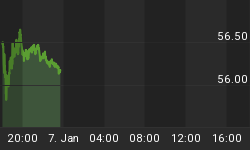The US trade deficit shrank 3% in July to $57.94 billion from a revised $59.49 billion (initial $58.82 billion) in June. Imports fell 0.7% to $164.2 bln, while exports barely edged up 0.41% to $106.2 billion.
Notably, the trade gap fell in the face of the second monthly increase in oil imports because exports posted their best percentage margin over imports since April 05. The chart below shows the US bilateral deficit improved with Mexico (+26%), Japan (+5%), while worsening with Canada (+15%), UK (+11%), Eurozone (+5%). The change in the trade gap with China was negligible. On a year to year basis, the bilateral deficit widened by 20% with China, by 47% with OPEC and by 6% with the Eurozone and Canada.

The 3% retreat in the trade deficit makes for a positive contribution to Q3 GDP. A continuation of this trend into the subsequent 2 months should maintain the positive contribution of net trade to GDP. Next exports lifted Q2 GDP growth by 1.2%, posting the first increase since Q3 03. The question remains whether other sectors of the economy would weigh on GDP in Q3. The August data should be free from the effects of Hurricane Katrina, but the last month of the quarter should reflect the erosion in industrial output, retail sales, services activity and mounting layoffs.
Another aspect worthy of notice in the GDP data is the personal consumption expenditure. Its contribution to Q2 GDP slowed to 2.12% from 2.44%, the lowest contribution rate since Q2 04. As the consumer cylinder makes up over 2/3 of the US economic engine, its steady slowdown over the past 4 quarters is not anathema could bring challenges to the Federal Reserve's insistence to tighten.
Fed Still to Dollar's Rescue?
The dollar retains its upward tone amid optimism from post Katrina-reconstruction spending, preliminary figures showing the 10K casualty estimates were an overshoot as well as a retreat in oil prices. Crude prices dropped to a 3-week low of $63.18 per barrel yesterday a combination of an expected decline in US oil demand and increased Saudi supply to Europe for next month. Dollar bulls may also be bracing for Thursday's CPI data which could come in line with last week's hawkish speeches by the Fed's Moscow and Yellen. But markets still see a rate hike this month as a toss up. Dollar bull may find reason to cheer by inflationary data, but an expected 1.4% decline in August retail sales, a drop in the Sept Empire and Philli Fed surveys could calm matters down.
As for the Fed, last week's comments from Chicago Fed's Michael Moscow and San Francisco Fed's Chief Janet Yellen bolstered the Fed's hawkish rhetoric by noting that rising oil prices may be partly passed through to core inflation and that monetary policy cannot reduce the fallout from Hurricane Katrina, were a an important tonic for the US currency.
Yet both Moscow and Yellen acknowledged that the Fed may need to make some complex choices and that further tightening may not be as instilled in the FOMC's mindset as it was over the past 15 months . Moscow stated the Fed is facing a "number of judgment calls" in assessing the Hurricane impact while Yellen posited that monetary policy is at a "challenging phase". This means that the easy consensus might no longer prevail in the Fed's Open Market Committee's tightening campaign.
Accordingly, the euro extended its sell-off amid the cusp of further Fed tightening helps remove 2/3 of the euro's 2 week gains. The currency has also retraced more than 61.8% of its 3-week gains versus the yen as rising possibilities in next week's German elections would result into "grand coalition" which would hamper labor reforms and might even impact Chancellor Schroeder's tax cuts on cross shareholdings sales.
Currency traders must also begin mulling the trend in house prices due to the effect of home equity on consumer demand. Fed Chairman Greenspan said last month : "The surprisingly high correlation between increases in home equity extraction and the current account deficit suggests that an end to the housing boom could induce a significant rise in the personal savings rate, a decline in imports and a corresponding improvement in the current account deficit". With long yields serving as the more effective driver of housing prices, only a steepening of the curve would do it. And just as we deem a halt in the Fed's tightening as the key to "normalizing" the yield curve, we believe that further Fed hikes would RE-flatten the yield curve, fail from pushing long-term rates and prolong further deficit widening according to Greenspan's words.

The dollar's resilience to rally against the Japanese continues unhindered by the overwhelming election victory by PM Koizumi, a 4-year high rally in the Nikkei and the first increase in bank lending in 7 years. But the technical picture seen above suggests (by the MACD) that the pair is likely to give off steam at the trend line resistance of 110.90-00. Given those fundamentals, the chart below suggests a dollar retreat back to 110.40, followed by 109.70s. Key support to crop up at the 100 day MA of 109.30. The 109 figure acts as the subsequent target-- 38% retracement of the 101.75-113.71 move. A breach above 111.00 would be confirmed by a breach of 111.20 - the 50% retracement of the 113.71-108.74 decline.















